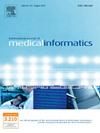快速获得临床医生需要的信息:药剂师用沃森(DynaMedex)评估DynaMed和micromedex使用现实世界的问题
IF 3.7
2区 医学
Q2 COMPUTER SCIENCE, INFORMATION SYSTEMS
International Journal of Medical Informatics
Pub Date : 2025-05-09
DOI:10.1016/j.ijmedinf.2025.105965
引用次数: 0
摘要
数字化护理点信息资源经常被临床医生用来回答临床问题。循证疾病管理数据库(DynaMed)与药学知识库(Micromedex)合并。我们评估了联合溶液DynaMedex的能力,以回答临床问题。方法采用真实问题进行测试,按信息类型和专业领域进行分类。两名药剂师使用关键字搜索和沃森助手(WA)独立完成了300个问题的600次搜索。搜索结果是根据是否找到信息(是,否),与问题的相关性(相关,不相关),找到答案的难度(容易,中等,困难)和证据的质量(好,一般,差)来评估的。结果关键词搜索和WA搜索的准确率分别为86.3%和81.0%。在关键词搜索中,86.0%的答案被认为是相关的,而在WA中,这一比例为74.5%。大多数答案很容易找到(关键词搜索78.7%,WA 94.4%)。关键词搜索的证据质量分别为62.7%、36.4%和0.9%,WA的证据质量分别为50.3%、47.8%和1.9%。结论药师对大多数临床问题的回答质量好、循证信息多、符合率高。通过识别不同的搜索词,标准化药物和疾病信息在适当章节中的位置,提供引用(如果有的话)和最高质量的证据,以及包括对尚未纳入的内容类型的访问,可以进一步改进这一资源。本文章由计算机程序翻译,如有差异,请以英文原文为准。
Getting to the information clinicians need quickly: Pharmacist evaluation of DynaMed and micromedex with watson (DynaMedex) using real-world questions
Introduction
Digital point-of-care information resources are frequently used by clinicians to answer clinical questions. An evidence-based disease management database (DynaMed) was merged with a pharmaceutical knowledge base (Micromedex). We evaluated the ability of the combined solution, DynaMedex, to answer clinical questions.
Methods
Real-world questions were used for testing and were categorized by information type and specialty area. Two pharmacists independently performed 600 searches for 300 questions, using keyword search and Watson Assistant (WA). Search results were evaluated based on whether information was found (yes, no), relevance to the question (relevant, not relevant), difficulty in finding the answer (easy, medium, hard), and quality of the evidence (good, fair, poor).
Results
An answer was found 86.3% of the time using keyword search and 81.0% of the time using WA. In keyword searches, 86.0% of answers were considered relevant and 74.5% in WA. Most answers were easy to find (78.7% in keyword search, 94.4% in WA). The quality of evidence for answers was good, fair, or poor in 62.7%, 36.4%, and 0.9% for keyword search and 50.3%, 47.8%, and 1.9% for WA.
Conclusion
Pharmacists found answers to most clinical questions easily with good quality, evidence-based information and a high agreement rate. This resource could be further improved by recognizing different search terms, standardizing the location of drug and disease information in appropriate sections, providing citations, if available, with the highest quality evidence, and including access to content types that haven’t been incorporated.
求助全文
通过发布文献求助,成功后即可免费获取论文全文。
去求助
来源期刊

International Journal of Medical Informatics
医学-计算机:信息系统
CiteScore
8.90
自引率
4.10%
发文量
217
审稿时长
42 days
期刊介绍:
International Journal of Medical Informatics provides an international medium for dissemination of original results and interpretative reviews concerning the field of medical informatics. The Journal emphasizes the evaluation of systems in healthcare settings.
The scope of journal covers:
Information systems, including national or international registration systems, hospital information systems, departmental and/or physician''s office systems, document handling systems, electronic medical record systems, standardization, systems integration etc.;
Computer-aided medical decision support systems using heuristic, algorithmic and/or statistical methods as exemplified in decision theory, protocol development, artificial intelligence, etc.
Educational computer based programs pertaining to medical informatics or medicine in general;
Organizational, economic, social, clinical impact, ethical and cost-benefit aspects of IT applications in health care.
 求助内容:
求助内容: 应助结果提醒方式:
应助结果提醒方式:


